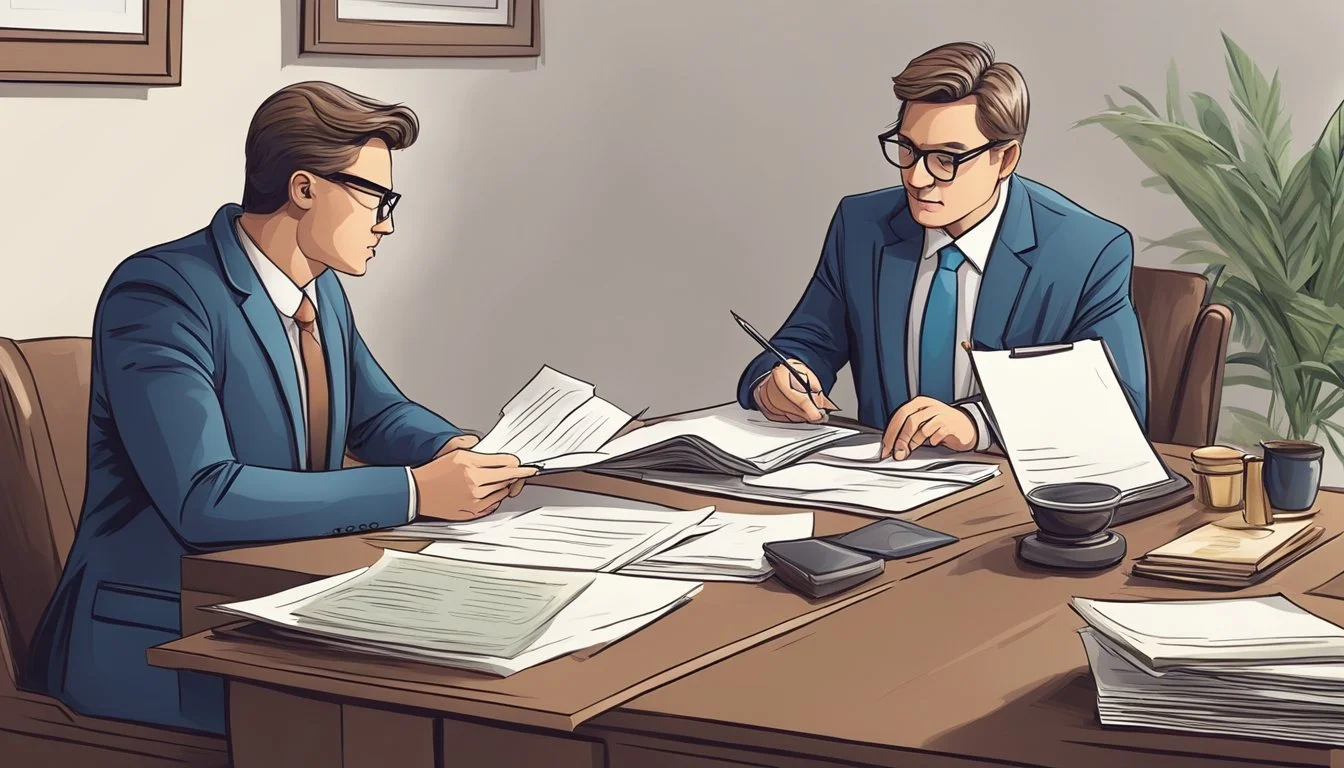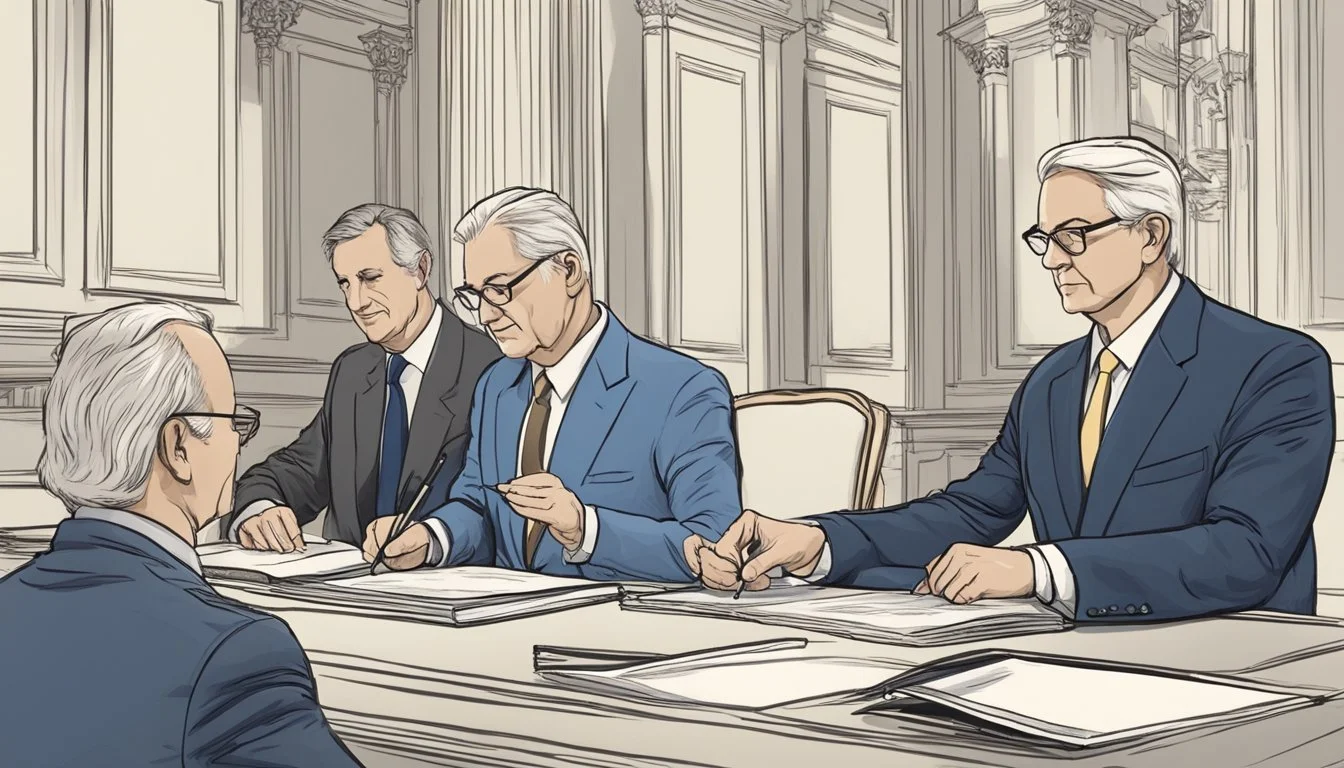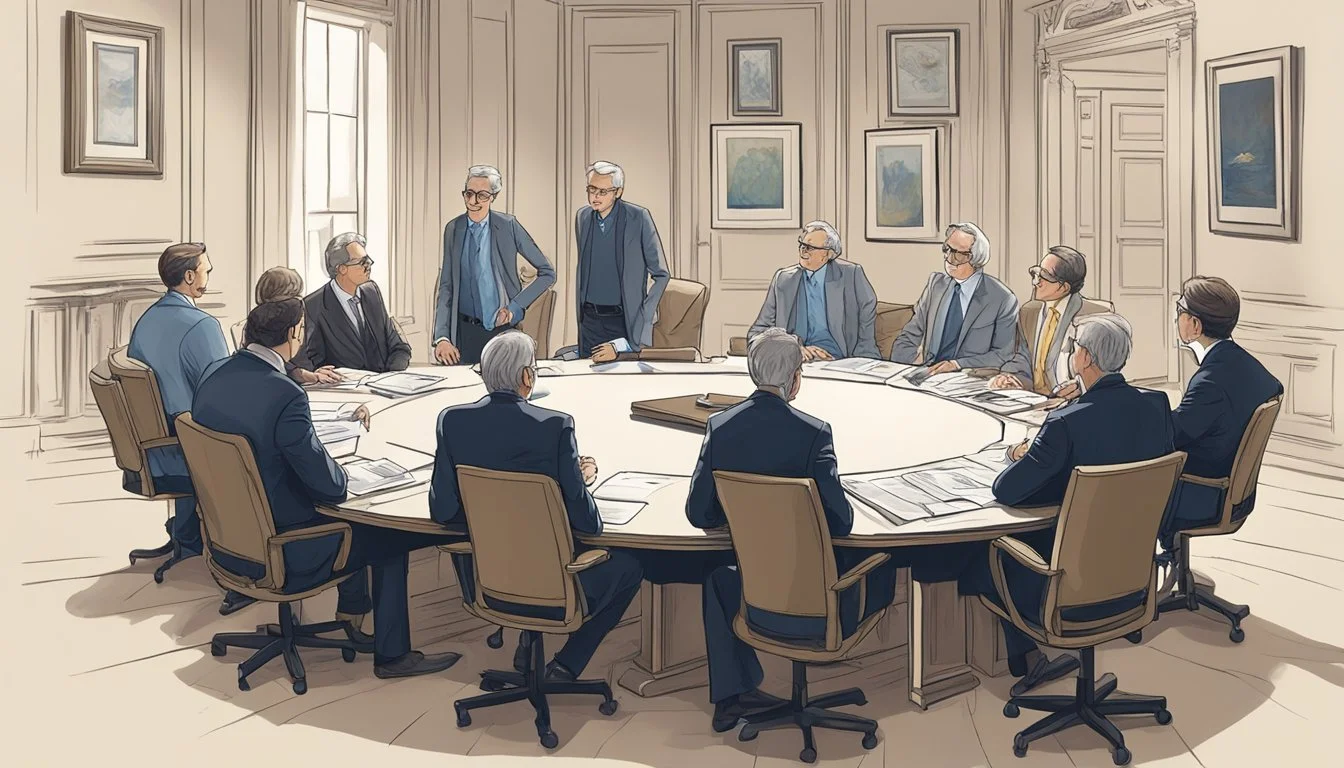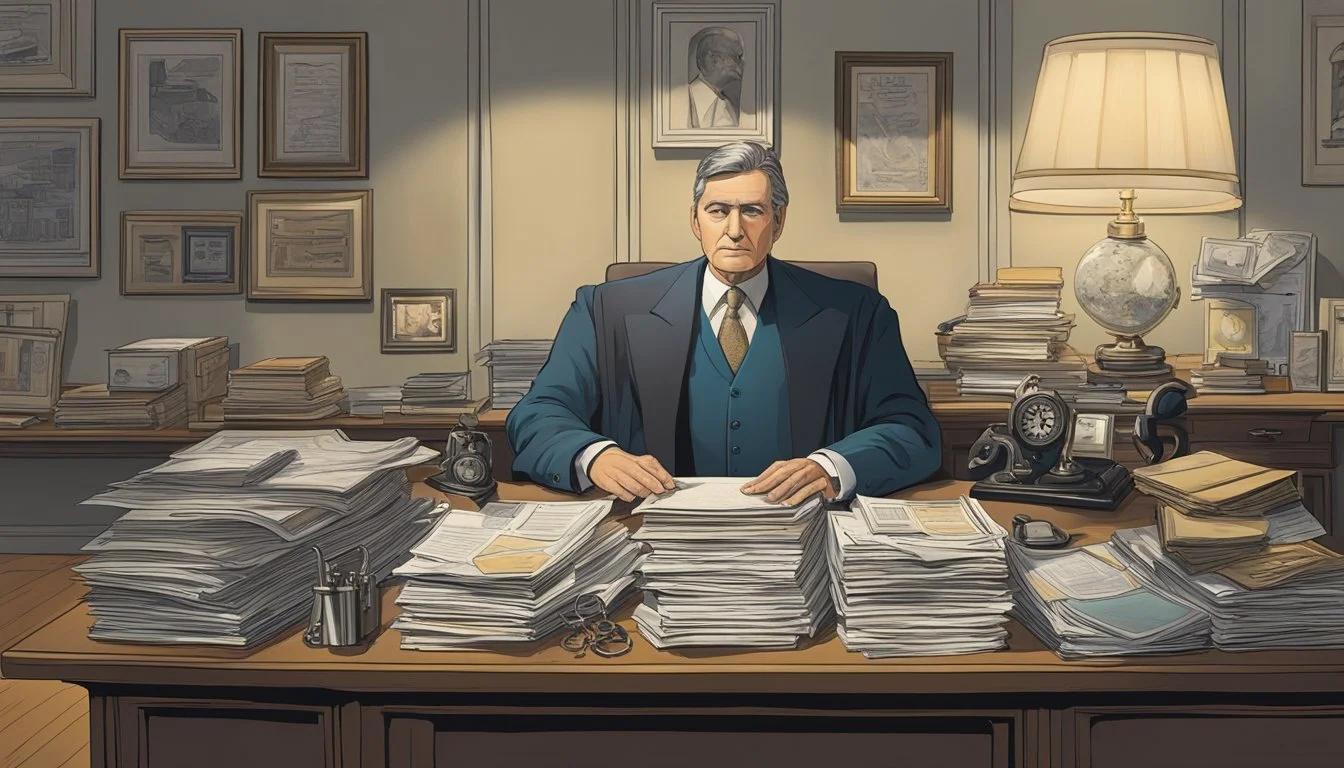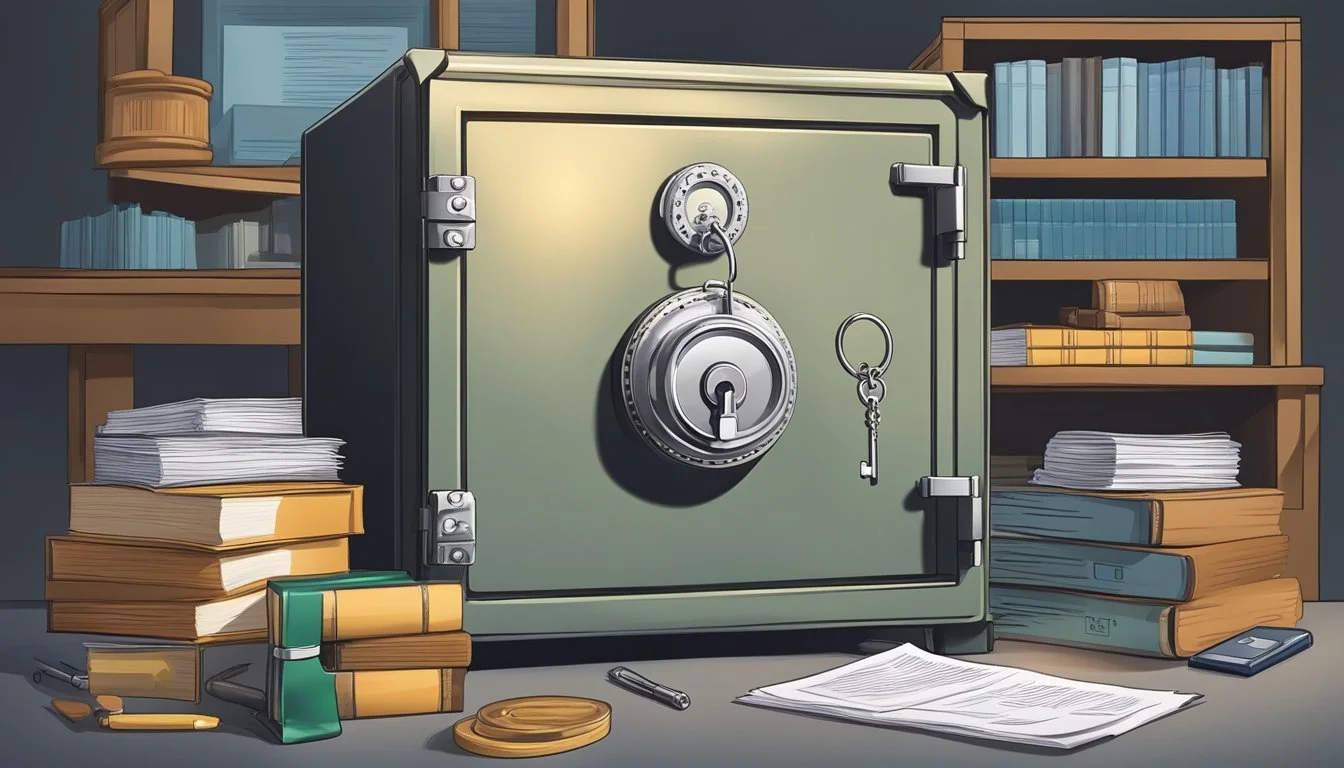9 Ways to Protect Your Artistic Legacy
Guarding Against a Narcissistic Executor or Trustee
Navigating the complexities of estate planning can be particularly challenging for artists, especially when considering how to safeguard their creative works for future generations. This task becomes even more daunting if the appointed executor or trustee has narcissistic tendencies, potentially putting an artist's legacy at risk.
How can artists ensure their life's work is protected against a narcissistic executor or trustee? Understanding ways to mitigate these risks is crucial for anyone looking to preserve their artistic legacy while maintaining control over their creations.
1) Establish a Trust for Artistic Works
Creating a trust for artistic works offers control and protection over an artist's creations. Through a trust, the artist can appoint a trustworthy individual or institution to manage their work according to specified wishes. This setup helps safeguard the legacy from the potential mismanagement of a narcissistic executor or trustee.
A trust ensures that the artist's vision and preferences remain intact. Instructions on how to handle the art—whether selling, lending, or displaying—can be clearly defined. The appointed trustee must adhere to these guidelines, reducing the risk of personal interests interfering with the artist's legacy.
Financial benefits are another advantage. A trust can help manage the revenue generated from the art, directing funds toward intended purposes such as supporting family members or funding charitable causes. This financial structure further insulates the artistic legacy from exploitation.
By placing the art in a trust, the artist ensures that their body of work is preserved and managed prudently. The trust can stipulate conditions for preservation, cataloging, and public access, ensuring that the art continues to inspire and educate future generations. For detailed steps on creating such a trust, visit this guide.
2) Create a Detailed Estate Plan
Artists must clearly articulate their wishes through a detailed estate plan. This includes specifying how their creative works should be managed, exhibited, or distributed after their passing. By outlining these preferences, an artist minimizes the chances of misinterpretation.
A well-structured estate plan should also designate a custodian or trustee to oversee the artistic legacy. Selecting someone who understands the significance of the art is crucial. Artists should choose a trustworthy individual who respects their vision.
Incorporate legal instruments such as copyrights, trusts, and wills. These tools help protect the artist's work from mismanagement by a potentially narcissistic executor. An estate planning lawyer can offer valuable assistance.
Regularly update the estate plan to reflect new works and changes in circumstances. Consistent reviews ensure that the artist's intentions are always current and legally binding. This proactive approach is crucial to safeguarding their legacy.
3) Designate an Alternative Executor
Designating an alternative executor is a crucial step in safeguarding your artistic legacy. An alternative executor acts if your primary executor is unable or unwilling to serve.
This option ensures that your creative assets are managed according to your wishes without disruption. Naming an alternative also provides a safety net, preventing potential conflicts or mismanagement by a narcissistic primary executor.
Choose a trustworthy individual who understands your artistic vision and respects your intentions. This person should be capable of making impartial and informed decisions about your work.
In addition to naming the alternative executor, clearly outline their responsibilities and expectations in your estate planning documents. This specification helps avoid ambiguities and ensures seamless execution of your plans.
4) Consult with an Estate Lawyer
Consulting with an estate lawyer is crucial in protecting your artistic legacy from a potentially narcissistic executor or trustee. An experienced attorney can provide tailored advice and ensure that legal documents reflect your exact wishes.
An estate lawyer can help you draft a comprehensive estate plan, including wills and trusts. This minimizes the chances of legal loopholes that an executor or trustee might exploit.
Lawyers are well-versed in local estate laws, which vary by jurisdiction. They can guide you through complex legal terms and processes, ensuring your artistic legacy is safeguarded.
Having professional legal assistance ensures that your executor or trustee adheres to your directives. This legal backing can deter any attempts to mismanage or exploit your estate.
An estate attorney can also assist in naming a custodian or trustee with a clear mandate. This can provide additional layers of protection against mismanagement by the executor or trustee.
Should disputes arise, your lawyer can offer continued legal support. They can help mediate conflicts and, if necessary, represent your interests in court.
Engaging an estate lawyer might seem costly, but the benefits far outweigh the risks of going without expert guidance.
For more detailed advice, consult articles like Estate Planning for Artists and Collectors: Preserving Creativity or Three Steps You Can Take Now to Protect Your Artistic Legacy.
5) Secure Digital Archives
Protecting your digital archives is crucial for preserving your artistic legacy. Start by identifying all digital assets, including high-resolution images, digital copies of physical works, and any related documents.
Use reliable cloud storage services to keep these files safe from hardware failures and physical damage. Consider using services that offer automatic backups for additional security.
Ensure access control by using strong, unique passwords and enabling two-factor authentication for all accounts. This minimizes the risk of unauthorized access. Keep an updated list of login credentials in a secure location.
Google offers an Inactive Account Manager feature, allowing artists to decide the fate of their account data if it becomes inactive. This can be a useful tool in managing your digital footprint posthumously.
Regularly review and update your digital archive to include new works and remove irrelevant files. Organize files in a logical manner to make them easily searchable. Labeling and categorizing your digital assets can prevent confusion for those who manage them in the future.
By following these steps, artists can ensure their digital legacy remains intact and accessible, preventing any tampering or mismanagement by a narcissistic executor or trustee.
6) Appoint a Legal Guardian for Art Collection
Appointing a legal guardian for your art collection ensures that your artworks are managed and preserved according to your wishes. This person acts in your best interest, safeguarding your legacy and preventing potential misuse or neglect by an executor or trustee.
Choose someone who understands the value and significance of your art collection. Preferably, the guardian should have a background in art or legal knowledge related to intellectual property. This ensures that they can make informed decisions about preserving and protecting your artworks.
Clearly outline the guardian's responsibilities in legal documents. These should detail how the artworks are to be maintained, displayed, or sold if necessary. Explicit instructions reduce ambiguity and ensure your collection is handled as you envisioned.
Regularly review and, if needed, update the guardian's role and responsibilities to reflect any changes in your collection or your wishes. This proactive approach ensures that your art remains protected and your legacy endures over time.
By appointing a legal guardian, you add an extra layer of security to your collection, ensuring it is treated with the care and respect it deserves. This decision helps prevent any mismanagement and aligns with your desire to preserve your artistic legacy.
7) Document Your Wishes Explicitly
Clearly writing down your intentions is essential. This ensures there is no ambiguity about your desires regarding your artwork and estate. An explicit, well-documented plan reduces the potential for misunderstandings or disputes.
Use precise language to communicate your wishes. Specify who should manage, distribute, or care for your art. Clearly name the beneficiaries, and outline their roles and responsibilities.
Keep these documents updated and in a secure place. Regularly review and revise them to reflect your current circumstances and intentions. Storing these documents in a safe, easily accessible location ensures they can be quickly referenced when needed.
Discuss your plans with a legal professional. Consulting an experienced attorney can help ensure your documentation is legally sound and comprehensive. They can provide valuable guidance on the specific language and clauses to include.
Consider including a personal statement. This can offer further clarity on your intentions and the significance of your work. A personal statement can help prevent misinterpretations by providing additional context and insight into your wishes.
By documenting everything explicitly, you create a solid foundation for the preservation of your artistic legacy. Detailed and clear instructions make it easier for your executor or trustee to follow your wishes accurately.
8) Conduct Regular Estate Reviews
Regular estate reviews are crucial to safeguard an artistic legacy. They ensure that plans are aligned with your current wishes and comply with any new laws. It's recommended to review your estate with a qualified attorney at least annually.
Identifying potential issues early is essential. By regularly assessing beneficiaries, assets, and legal stipulations, one can avoid complications and disputes. An updated plan also reflects any changes in personal relationships and financial circumstances.
Including trusted advisors in these reviews adds an extra layer of protection. These professionals can provide insight and advice on how to navigate complex situations. This collaborative approach can mitigate risks associated with a narcissistic executor or trustee.
For more information, you can visit Lancaster Law Firm's guide on Artistic Legacy Planning. Proactive, thorough reviews are a necessary practice in preserving an artistic legacy effectively.
9) Consult with Art Appraisal Experts
Accurate valuation is crucial in preserving an artist's legacy. Art appraisal experts can provide detailed assessments of the value of an artist's work. These professionals have the knowledge to evaluate pieces based on factors such as the artwork's condition, provenance, and market trends.
Working with appraisal experts helps ensure that the financial aspects of an artist's legacy are properly documented. This documentation can be essential when setting up legal trusts or estates. It also offers a clear and unbiased perspective on the value of the art.
Art appraisal experts can also assist in managing and distributing the artwork. They provide insights into the best practices for both displaying and storing pieces. This care is vital in preventing damage and maintaining the artwork's value over time.
Consulting with these experts can also protect against potential disputes. In cases where an executor or trustee might undervalue or exploit the artwork, a professional appraisal provides a solid reference point. This can help in legal proceedings and ensure that the artist's wishes are respected.
Consider reaching out to reputable appraisal organizations or individual appraisers with a proven track record. Consistent re-evaluations might be necessary, especially if the market for the artist's work changes. This keeps all documentation current and accurate.
Understanding the Role of an Executor or Trustee
An executor or trustee is vital in managing and distributing the assets of an estate or trust. They have specific duties and powers that can significantly impact the legacy of an artist.
Duties and Responsibilities
An executor is named in a will and responsible for settling an estate after someone’s death. Tasks include locating and managing assets, paying debts, and distributing property according to the will. Their role often requires interactions with probate courts and adhering to legal processes.
A trustee, on the other hand, manages assets placed in a trust. Their responsibilities can include investing assets, managing property, and ensuring individuals named in the trust receive their benefits. Unlike an executor, a trustee's role can be ongoing for years, requiring continuous management and decision-making.
Both roles require a fiduciary duty, meaning they must act in the best interests of the beneficiaries and manage the assets prudently and responsibly.
Potential for Abuse of Power
Executors and trustees hold significant control over valuable assets, and this power can be misused. For instance, a narcissistic executor or trustee might prioritize their interests over the deceased's wishes or the beneficiaries' needs.
They might mismanage funds, delay distributions, or manipulate situations to benefit themselves. This abuse can lead to legal battles, loss of assets, and damaged relationships among the beneficiaries. Therefore, it is crucial to choose trustworthy individuals for these roles to protect the integrity of your artistic legacy.
To safeguard against such risks, including clear, detailed instructions in the will or trust, seeking legal advice, or appointing a co-executor or co-trustee can be effective strategies.
Legal Safeguards for Artists
Legal safeguards ensure your artistic legacy is protected from potential misuse or mismanagement. Two essential strategies include creating a detailed will and establishing trust provisions.
Creating a Detailed Will
A well-crafted will is pivotal in safeguarding an artist’s legacy. It specifies how an artist’s work should be handled after their death. Artists need to identify a reliable executor who respects their wishes.
In the will, clearly list all artworks, highlighting any significant pieces that require special attention. Define what should happen to these works—whether they should be sold, donated, or maintained in a collection. Artists should also include instructions for the maintenance, storage, and exhibition of their artwork.
For additional protection, including clauses that address potential disputes can be beneficial. This helps ensure that the artist’s intentions are honored without interference from individuals with conflicting interests. Regularly updating the will to reflect any changes in the artist’s body of work or personal preferences is also crucial.
Establishing Trust Provisions
Creating a trust can provide an added layer of security. Trusts allow artists to set specific terms for the management and distribution of their work. By establishing a trust, artists can appoint a trustee who is legally obligated to act in the best interests of the trust’s beneficiaries.
Trusts can be either revocable or irrevocable, depending on the level of control artists wish to maintain. Including detailed instructions within the trust document can ensure that the trustee handles the artwork according to the artist's wishes.
Furthermore, trust provisions can specify financial support for the maintenance and promotion of an artist’s work. This might include funding for exhibitions, publications, or preservation efforts. Trusts can also provide guidelines on licensing and reproduction rights, ensuring that the artist’s work is used appropriately.
By combining detailed wills with robust trust provisions, artists can effectively safeguard their legacy from mismanagement and ensure that their work is handled with the respect and care it deserves.
Selecting a Trustworthy Executor
Choosing the right executor is crucial to ensuring your artistic legacy is honored and protected. This section will help identify key qualities to look for and provide tips on effectively interviewing potential candidates.
Qualities to Look For
Integrity: An executor must be honest and reliable. Integrity ensures they will act in your best interests and follow your will accurately.
Organizational Skills: Handling an estate requires meticulous organization. The executor will need to manage paperwork, communicate with beneficiaries, and possibly oversee the sale of artwork.
Impartiality: A trustworthy executor should be able to mediate conflicts fairly. Family dynamics can be complicated, and the executor must remain neutral.
Financial Acumen: Estate management often involves managing finances, especially if artwork needs to be sold or appraised. The executor should have a good grasp of financial principles.
Legal Knowledge or Willingness to Consult Professionals: While not a must, having a basic understanding of legal processes or the foresight to seek professional advice is beneficial.
Interviewing Potential Executors
Prepare Questions: Develop a list of specific questions to assess their suitability. Ask about their experience with estate management and their understanding of legal obligations.
Gauge Commitment: Ensure the potential executor is willing to dedicate the required time and effort. Discuss the scope of their responsibilities and gauge their reaction.
Assess Communication Skills: Effective communication is key. Observe how clearly they explain their answers and if they ask relevant questions about your wishes.
Check References: If possible, speak with people who have worked with them in similar roles. This can provide insight into their reliability and performance.
Simulate Scenarios: Present hypothetical situations related to managing your artistic legacy. See how they would respond to conflicts, financial decisions, and other challenges.





